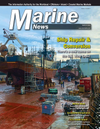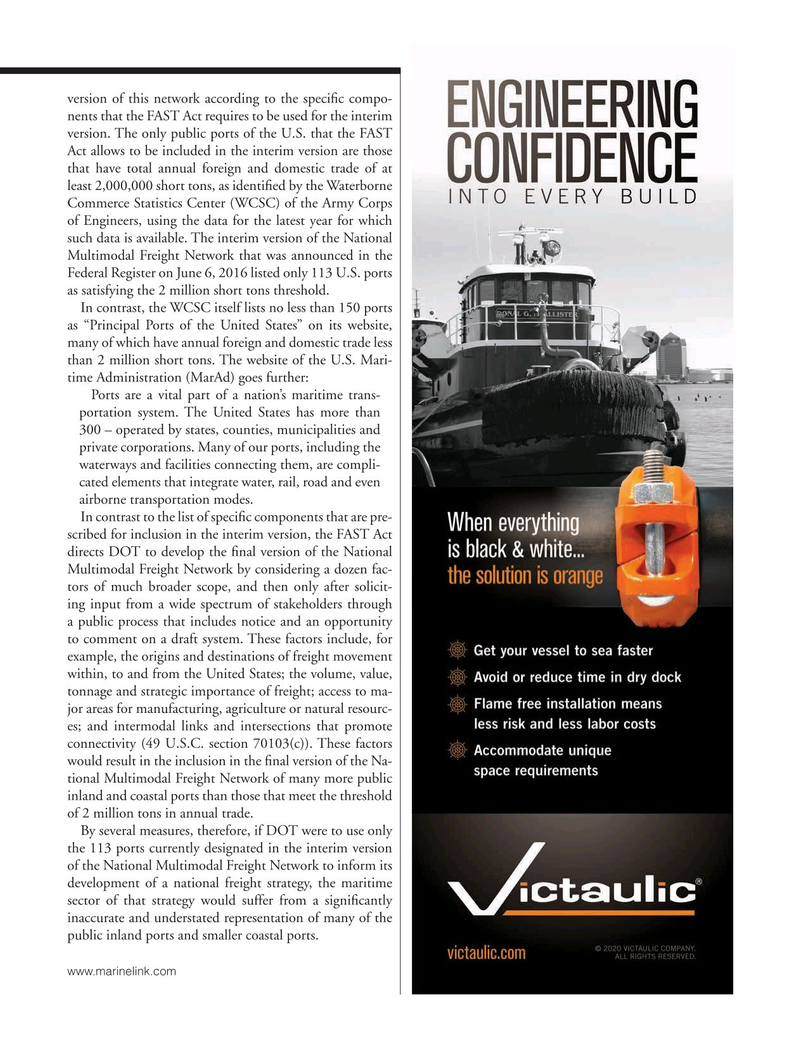
Page 23: of Marine News Magazine (March 2020)
Workboat Conversion & Repair
Read this page in Pdf, Flash or Html5 edition of March 2020 Marine News Magazine
version of this network according to the speci? c compo- nents that the FAST Act requires to be used for the interim version. The only public ports of the U.S. that the FAST
Act allows to be included in the interim version are those that have total annual foreign and domestic trade of at least 2,000,000 short tons, as identi? ed by the Waterborne
Commerce Statistics Center (WCSC) of the Army Corps of Engineers, using the data for the latest year for which such data is available. The interim version of the National
Multimodal Freight Network that was announced in the
Federal Register on June 6, 2016 listed only 113 U.S. ports as satisfying the 2 million short tons threshold.
In contrast, the WCSC itself lists no less than 150 ports as “Principal Ports of the United States” on its website, many of which have annual foreign and domestic trade less than 2 million short tons. The website of the U.S. Mari- time Administration (MarAd) goes further:
Ports are a vital part of a nation’s maritime trans- portation system. The United States has more than 300 – operated by states, counties, municipalities and private corporations. Many of our ports, including the waterways and facilities connecting them, are compli- cated elements that integrate water, rail, road and even airborne transportation modes.
In contrast to the list of speci? c components that are pre- scribed for inclusion in the interim version, the FAST Act directs DOT to develop the ? nal version of the National
Multimodal Freight Network by considering a dozen fac- tors of much broader scope, and then only after solicit- ing input from a wide spectrum of stakeholders through a public process that includes notice and an opportunity to comment on a draft system. These factors include, for example, the origins and destinations of freight movement within, to and from the United States; the volume, value, tonnage and strategic importance of freight; access to ma- jor areas for manufacturing, agriculture or natural resourc- es; and intermodal links and intersections that promote connectivity (49 U.S.C. section 70103(c)). These factors would result in the inclusion in the ? nal version of the Na- tional Multimodal Freight Network of many more public inland and coastal ports than those that meet the threshold of 2 million tons in annual trade.
By several measures, therefore, if DOT were to use only the 113 ports currently designated in the interim version of the National Multimodal Freight Network to inform its development of a national freight strategy, the maritime sector of that strategy would suffer from a signi? cantly inaccurate and understated representation of many of the public inland ports and smaller coastal ports.
www.marinelink.com

 22
22

 24
24
